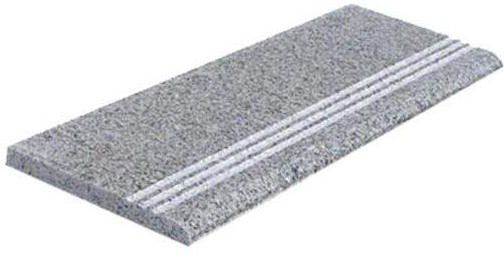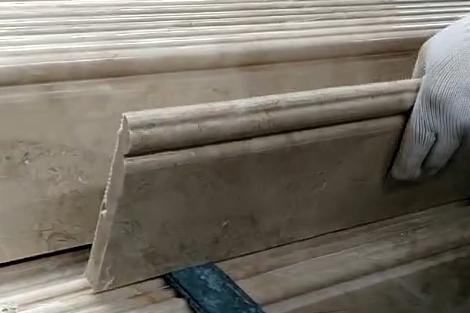The Evolution of Marble Granite Line Polishers: A Look at Modern Advances
Time:
Oct 15,2025
The Evolution of Marble Granite Line Polishers: A Look at Modern Advances
Table of Contents
- Introduction to Marble Granite Polishers
- A Historical Overview of Marble Granite Polishers
- Modern Technology in Marble Granite Line Polishers
- Materials and Design Evolution
- Environmental Considerations in Modern Polishers
- Current Trends and Digitalization in the Polishing Industry
- Conclusion: The Future of Marble Granite Polishers
- Frequently Asked Questions
Introduction to Marble Granite Polishers
In the realm of stone processing, the **marble granite line polisher** stands as a pivotal tool. These machines are specifically designed to enhance the surface of marble and granite, ensuring a smooth, glossy finish that highlights the natural beauty of the stone. Over the years, advancements in technology have dramatically transformed these machines, allowing for greater efficiency, precision, and user-friendliness. Understanding the evolution of these polishers helps us appreciate their significance in modern manufacturing and craftsmanship.
A Historical Overview of Marble Granite Polishers
The history of marble granite polishers dates back to ancient civilizations, where artisans manually polished stone using rudimentary tools. Early techniques involved using abrasives like sand and water to achieve a satisfactory finish. As industrialization progressed, these processes became mechanized, leading to the introduction of the first grinding machines in the late 19th century.
By the mid-20th century, the introduction of electric polishers marked a significant turning point. These machines drastically reduced the time and labor involved in polishing, transforming the industry. The evolution continued with the incorporation of more advanced materials and designs, resulting in machines that are not only more effective but also easier to handle.
Modern Technology in Marble Granite Line Polishers
Modern marble granite line polishers incorporate various technological advancements that enhance their performance and functionality. Below, we explore some of the most notable features that characterize contemporary polishers.
Advanced Motor Designs
Modern polishers utilize *high-efficiency motors* that provide substantial power while minimizing energy consumption. These motors are designed to sustain consistent torque, allowing for uniform polishing across varied surfaces. This technological advancement ensures that the polisher can handle different stone types, from softer marbles to harder granites, without compromising quality.
Ergonomic Innovations
Today’s polishers are designed with ergonomics in mind, making them more comfortable for extended use. Features such as adjustable handles, lightweight frames, and vibration-dampening systems help reduce operator fatigue. This focus on user experience enhances productivity, allowing workers to devote more time to crafting exquisite finishes.
Smart Features and Automation
The integration of smart technology is one of the most exciting advancements in the polishing industry. Many modern machines come equipped with *digital displays*, allowing operators to monitor performance metrics in real-time. Automation features, such as programmable settings for different polishing stages, help ensure consistent results, reducing the margin for error.
Materials and Design Evolution
The evolution of materials used in the construction of marble granite polishers has significantly influenced their durability and performance. Early models were predominantly made from heavy metals, which, while robust, made the machines cumbersome and less efficient.
Modern polishers often employ lightweight yet durable materials such as aluminum and high-strength composites. This change not only enhances portability but also contributes to better heat dissipation, reducing the risk of overheating during extended use. Additionally, advancements in coating technology have led to improved resistance to wear and tear, ensuring these machines can withstand rigorous usage.
Environmental Considerations in Modern Polishers
As the global focus on sustainability increases, manufacturers are embracing eco-friendly practices in the production and operation of marble granite polishers. Many modern machines are designed to operate with minimal water usage, a crucial factor in stone polishing processes. This not only conserves water but also minimizes wastewater generation, aligning with environmental regulations and standards.
Furthermore, manufacturers are exploring the use of recycled materials in the production of polishers. Such initiatives not only reduce waste but also appeal to environmentally conscious consumers and businesses striving to improve their green credentials.
Current Trends and Digitalization in the Polishing Industry
The polishing industry is currently witnessing a surge in digitalization. From online marketplaces to software solutions that streamline operations, businesses are leveraging technology to improve efficiency and customer satisfaction.
Digital platforms allow manufacturers to offer more tailored solutions, enabling customers to customize their polishing machines based on specific needs. Additionally, social media and online forums provide a space for professionals to share insights and experiences, fostering a community that drives innovation.
As the demand for automation and efficiency continues to grow, we can expect further advancements such as the incorporation of artificial intelligence, which may revolutionize how machines operate and interact with users.
Conclusion: The Future of Marble Granite Polishers
The evolution of marble granite line polishers reflects the broader trends in manufacturing and craftsmanship. As technology advances, we can anticipate even more sophisticated machines that not only enhance productivity but also prioritize user experience and environmental sustainability. The journey from manual polishing to the high-tech machines of today highlights the industry’s commitment to innovation and excellence.
As we look to the future, it's clear that marble granite polishers will continue to evolve, adopting new technologies and methods that cater to the ever-changing needs of the industry. For professionals in stone processing, staying abreast of these developments will be key to maintaining a competitive edge in an increasingly demanding market.
Frequently Asked Questions
1. What are the main types of marble granite line polishers available?
The main types include handheld polishers for smaller jobs, automatic or semi-automatic machines for larger projects, and specialized machines tailored for specific stone types.
2. How do I choose the right polisher for my needs?
Consider the size of your projects, the type of stone you work with, and any specific features you might need, such as weight, ergonomics, and automation capabilities.
3. What maintenance is required for modern marble granite polishers?
Regular cleaning, ensuring blades and pads are replaced as needed, and checking motor performance are essential to maintaining optimal function.
4. Are there environmentally friendly options available?
Yes, many manufacturers now produce machines that use fewer resources, such as water and energy, and utilize recycled materials in their construction.
5. How has digitalization impacted the polishing industry?
Digitalization has streamlined operations, improved customer interactions, and led to the development of smart machines equipped with advanced features for enhanced performance.
RELATED NEWS







